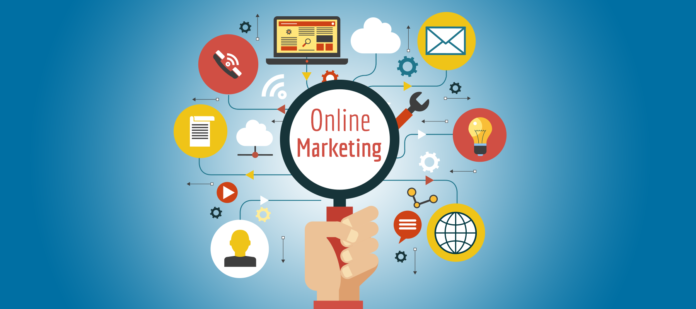The marketing funnel is an image of the process of your customers from finding information about your products before making a purchase. It’s among the most powerful tools to assist you in gathering insights, spot bottlenecks and eliminate the bottlenecks.
Traditional marketing funnels break into four phases including awareness, interest, consideration and action. These stages were modeled following the well-known AIDA framework, but have changed to reflect contemporary consumer behavior and digitalization.
Awareness
The marketing funnel is not complete in the absence of recognition. It’s the first step towards a potential client or customer. It is your chance to explain to them that you exist, what you are and how you can assist them in your needs.
This stage could be approached in different ways. A good strategy for this stage is to share details about your business that is useful and pertinent, while also being interesting and stimulating. This can be done via blog and social media postings, and webinars.
Direct mail is yet another successful method to get the word out regarding your company’s brand. To increase your awareness about the products and services you offer send out postcards , as well as fun, personalized stickers, as well as handwritten notes bearing the logo of your company.
Social media is a great way for contacting potential customers and clientsand to help them share the services you offer and your company with family and friends. This will help build your following into a group of individuals who are engaged in your company, which could eventually lead to them becoming advocates for your brand.
Marketing funnels change constantly. It’s essential that you monitor it continuously and analyze it in order to determine if there are any improvements for customers. marketing funnel You need both qualitative and quantifiable data to gauge whether your marketing funnel has been making new leads or converting.
Your company’s success is contingent upon your ability to make sure your clients are happy and deliver the services or products that they want. This is measured through customer satisfaction scores and customer retention rate, regular revenues, regular customers.
Since these are data that are quantifiable, you should also know how your customer engages in each piece of content. In order to determine the CTAs perform best at making conversions happen, it is possible to track the number of blog posts that have them. You will be able to discern which articles perform the best in helping potential customers navigate the sales funnel.
Interest
It is a great time to showcase the product’s possibilities. The clients begin to assess your products and come to a decision on whether they’d like to purchase. Your product could provide the best fit.
This phase requires creativity and imagination in the content you create and also a proof that you value their money. A properly designed landing page could present your greatest qualities. Consider a FAQ or live chat to help them answer any questions they may have before they purchase your item.
If you’re able to afford it, multi-channel marketing can be a viable choice. The phase of interest is the time to shine. Re-engage customers by sending them email and social media marketing campaigns that send them the right type of content to encourage the visitor to turn to lead. Your customers can track their’ progress and ensure they’re pleased throughout the journey. Ortto is a platform for CRM and Analytics that lets you track how customers behave in order to create relevant advertising materials.
Consideration
The stage of consideration is when buyers evaluate the product or service you offer, and decide whether it’s the right choice. People can be waiting for weeks even months before deciding whether or not they’d like to purchase your item. It is essential to offer helpful information and content that will aid in this decision-making process.
Brands can also use considerations to build brand recognition. It is possible to do this by making content specific to the interest of the viewers by comparing various products as well as offering trial trials or demos.
The brand can engage prospects through emails, specific content as well as case studies at this phase. This is a great way in order to teach potential customers, and help them understand how the brand is able to address the issues they face.
Also, you can boost conversion rates by asking existing customers to let their friends know about their experience. This is one of the most effective ways to drive repeat sales that can end up in higher average order value (AOV).
A well-designed marketing channel is essential to your business’s achievement. You must, however, adjust your methods to meet the changing needs of your customers. Your strategy for marketing may have to change in order to stay ahead of the changing digital landscape and sophisticated consumers.
The more successful campaigns to guide prospects through the purchasing process from understanding to advocating. To do this, develop campaigns to target every user according to their past activities.
For example, if someone has already been familiar with the brand you represent, they may connect with you via social media and sign up for your email newsletter, or even listen to a podcast. These interactions can be mapped to pinpoint the point at their journey and then target them with messages in line with their stage.
For more tips on developing your funnel, please read our blog post, How to Determine Your Marketing Funnel. We’ll go over the different kinds of funnels that are used for marketing and teach you how to efficiently implement them. There will be suggestions for creating an effective plan that will increase sales and conversion rates.
Conversion
Conversion funnels allow you to see your clients’ complete journey. Conversion funnels help understand why certain visitors are more successful than other visitors.
Conversion funnels can serve as a useful tool in monitoring and enhancing your online marketing efforts. If you evaluate the effectiveness of your funnel for marketing, you can improve the overall experience for your users and also increase the number of revenue.
Marketing funnels remain an ongoing project. It’s crucial to constantly enhance your approach to remain ahead of changes in the needs and expectations of your intended audience. It is possible to engage with your customers and convince them to make a purchase with this approach.
It’s an essential stage in the journey of a customer because it helps build trust with your customers. It also lets you create an established relationship with your future customers to ensure that they’re more likely to make purchases from you in the future.
The next stage is when you are able to draw customers towards your product or company by using advertising and marketing. This may include articles on your blog, posts on social media platforms, content, or other internet-based techniques.
In certain situations you can also employ methods of marketing offline to connect with new customers. If the audience you are targeting is in a specific area or has a certain time frame, this could be one option.
If you are a food blog owner selling cookbooks, your blog could be utilized to reach potential customers seeking recipe ideas. It is then possible to use your newsletters via email, as well as other methods to draw potential customers and convince them to purchase.
It’s important to remember that each and every one of your conversions is a win for your company. The higher conversion rates indicate that you are getting more visitors to your site than you cost. That means that your customers are spending more time on your pages and spending more time there.
Reviewing your analysis of your Google Analytics reports will allow you to analyze your conversion rates at each stage of your sales funnel. This data to assess if your funnel is profitable or not.
